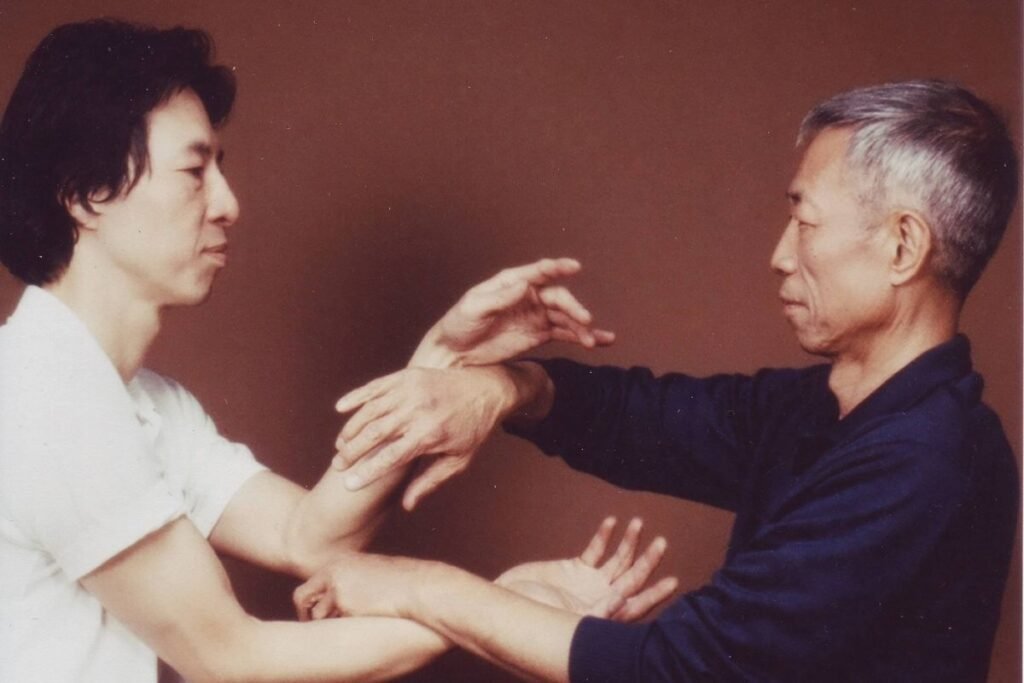Wing Chun Kung Fu, a Chinese martial art with a rich history, is renowned for its practicality, efficiency, and effectiveness. Within the world of Wing Chun, two distinct approaches have emerged: internal and external. While both share common techniques and principles, they differ significantly in their training methods and philosophical underpinnings. In this exploration, we will delve into the nuances of internal and external Wing Chun Kung Fu, and argue why the internal approach offers a superior path to mastery.
Internal Wing Chun vs External Wing Chun
Internal Wing Chun Kung Fu places a heavy emphasis on cultivating the practitioner’s internal energy, known as “Chi.” The focus is on harnessing and directing this internal energy for enhanced power, speed, and efficiency. By integrating the mind, body, and spirit, internal Wing Chun practitioners aim to achieve a state of unity and fluidity in their movements.
In contrast, external Wing Chun Kung Fu focuses primarily on physical conditioning and external strength. It emphasizes rigorous physical training, muscular development, and repetitive practice of techniques. While external practitioners certainly possess formidable skills, they often lack the deeper understanding of energy manipulation and the subtleties of movement exhibited by their internal counterparts.

Advantages of Internal Wing Chun
One of the key advantages of internal Wing Chun Kung Fu lies in its emphasis on relaxation and efficiency of movement. Internal practitioners learn to conserve energy by minimizing unnecessary tension in their bodies. By developing a relaxed and supple body, they can execute techniques with greater speed, precision, and economy of motion. This efficiency grants internal practitioners a distinct advantage in combat situations, allowing them to react and adapt swiftly to their opponent’s actions.
Internal Wing Chun Kung Fu also cultivates sensitivity and awareness, known as “Gan Sao,” through specific training methods such as Chi Sau (sticky hands). This heightened sensitivity enables practitioners to read their opponent’s movements and intentions, facilitating a proactive response. By attuning their senses, internal practitioners can intercept attacks and control the flow of a confrontation, nullifying the opponent’s advantage.
Furthermore, internal Wing Chun Kung Fu emphasizes the cultivation and application of internal energy. Through practices like Qi Gong, meditation, and specific breathing techniques, practitioners learn to harness and direct their Chi. This internal energy can be used to enhance striking power, bolster defensive capabilities, and promote overall physical and mental well-being. The ability to channel internal energy empowers internal Wing Chun practitioners to generate force effortlessly, even from seemingly minimal physical exertion.
What’s The Difference?
In contrast, external Wing Chun Kung Fu relies primarily on physical strength and athleticism. While physical conditioning is undoubtedly important, it has its limits. External practitioners may find themselves relying on sheer power alone, which can lead to exhaustion and reduced effectiveness in prolonged engagements. In the face of a physically stronger opponent, external practitioners may find themselves at a disadvantage due to their reliance on external force.
Internal Wing Chun Kung Fu, with its emphasis on relaxation and internal energy cultivation, enables practitioners to overcome physical limitations. By tapping into the energy within, internal practitioners can augment their physical abilities and generate power without undue strain on their bodies. This approach grants them a sustainable advantage in combat, allowing them to maintain their performance over extended periods.
Another critical aspect that sets internal Wing Chun Kung Fu apart is its focus on the development of the practitioner’s mindset. Internal training cultivates qualities such as patience, adaptability, and mental clarity. By honing their mental faculties, internal practitioners are better equipped to assess and navigate complex combat scenarios. They can remain calm under pressure, making decisions quickly and effectively. This mental fortitude provides internal practitioners with a strategic advantage, allowing them to outmaneuver opponents who may rely solely on physical attributes.
In contrast, external Wing Chun Kung Fu tends to place less emphasis on mental training, which can result in a lack of composure and an overreliance on brute force. This can leave external practitioners vulnerable to manipulation, as they may become predictable and easily overwhelmed by opponents who possess superior mental acuity.
Both Offer Valuable Skills but…
In conclusion, while both internal and external Wing Chun Kung Fu offer valuable skills and techniques, the internal approach stands out as the superior path to mastery. Internal Wing Chun Kung Fu’s focus on energy cultivation, relaxation, efficiency of movement, heightened sensitivity, and mental fortitude provides practitioners with a holistic and sustainable advantage in combat situations. By tapping into the power within, internal practitioners can transcend the limitations of physical strength alone, allowing them to achieve remarkable levels of skill and mastery. So, if one seeks to unlock the full potential of Wing Chun Kung Fu, the internal path is the key to unveiling the power within.

